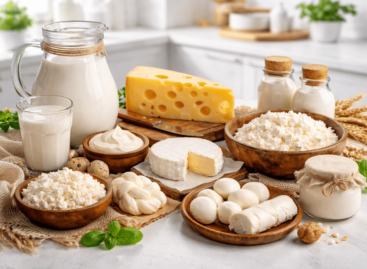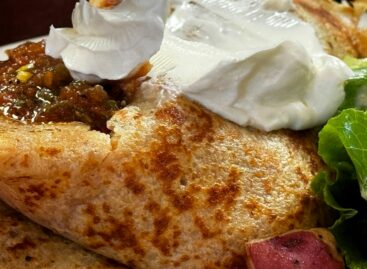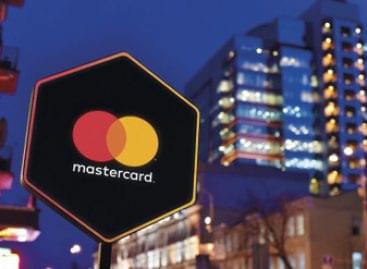Wheat and dairy punctuate 12.2% spike in food prices in the last year in the US
Prices for food-at-home shot up 12.2% over the last year, the largest 12-month jump posted since April 1979, according to the Bureau of Labor Statistics’ Consumer Price Index for June. Overall inflation was 9.1% for the year, led by food and gas prices. Inflation for items other than food and gas was 5.9%.

As inflation continues to surge and fears of a recession on the horizon, consumers will continue to pay close attention to which food categories stretch them thin.
On a monthly basis, food-at-home prices increased by 1% in June, slower than the 1.4% monthly increase in May. Some items which had previously seen price increases saw modest decreases, such as meat, which decreased by 1.3% in June.
All but one of the major food-at-home categories saw double-digit price increases over the past year, a trend that will continue to test shoppers’ willingness to keep purchasing their typical food items.
The continued increase in wheat prices can partially be attributed to the ongoing war in Ukraine.
“With supplies from Ukraine halted, the price for a bushel of wheat has been trending upwards of $9 per bushel, and wheat prices are skyrocketing globally,” Rob Weisberg, general manager of Incentives at Inmar Intelligence, said in an email.
There are also problems on the horizon for U.S.-grown wheat. The crop is projected to drop to its lowest supply numbers since 2017 in this year’s growing season, according to the USDA’s most recent agricultural supply report. Wheat is impacted by extreme weather conditions.

few food categories saw prices stagnate or decrease in June
The BLS category of “other” foods — including everything from candy to spices — saw the sharpest increase in June, with prices rising 14.4% year-over-year. Butter stood out in this category with a 21.3% year-over-year increase, as producers continue to face heightened costs for milk. While overall dairy prices increased 13.5% over the past 12 months, the price of milk jumped 16.4%.
A few food categories saw prices stagnate or decrease in June, namely meat. Beef and veal prices decreased by 2.3% since May, and pork went down by 1.6%. According to USDA’s June livestock report, cattle production marginally increased because of a higher than anticipated cow slaughter. Pork production slightly increased in June also, because of higher availability of hogs, the USDA said.
Poultry, however, remains an outlier. Prices for chicken increased by 1.7% in June, and had a yearly increase of 18.6%. This comes as producers like Tyson struggle to meet demand and implement new processing strategies.
Demand for chicken could be increasing because consumers are buying it instead of costlier meats like beef, which economists predicted in May.
While meat may continue to see prices decline in the coming months, the underlying economic conditions are not recovering quickly enough, so price decreases may not mean inflation is letting up, Weisberg said.
“Looking at the food-at-home category as a whole, we have seen fluctuations in the rate of inflation, some months it’s gone down and then it’s right back up,” Weisberg said. “At this point, I don’t feel a drop in prices in a specific food category is an indication of inflation abating.”
In recent earnings reports, some food companies’ dollar increases in sales have been largely driven by price increases. This week, PepsiCo reported organic revenue growth of 9% in North America beverages and 14% in North America Frito-Lay snacks, but consumer prices had risen 12%. In Conagra’s latest earnings report, released Thursday, the company said its 6.8% increase in organic net sales during its last quarter was the result of higher prices.
If CPGs want to remain in good standing with consumers, they must provide more reasons for consumers to keep buying from them. These could include implementing loyalty programs, or keeping prices down by not passing on “the full weight of inflation” to them, Weisberg said.
“It’s imperative that food and beverage retailers and manufacturers pivot to meet consumer needs,” Weisberg said. “Companies who are providing incentives to consumers to combat inflation are gaining market share versus competitor brands.”
Related news
AKI: producer and processing prices of dairy products decreased last fall
🎧 Hallgasd a cikket: Lejátszás Szünet Folytatás Leállítás Nyelv: Auto…
Read more >Tejföl is only a name for live flora: new categories for sour dairy products will be introduced from 2026
🎧 Hallgasd a cikket: Lejátszás Szünet Folytatás Leállítás Nyelv: Auto…
Read more >PENNY announces dairy product price hike
🎧 Hallgasd a cikket: Lejátszás Szünet Folytatás Leállítás Nyelv: Auto…
Read more >Related news
The 6 most important payment trends in 2026:
🎧 Hallgasd a cikket: Lejátszás Szünet Folytatás Leállítás Nyelv: Auto…
Read more >Tourism continues to expand dynamically
🎧 Hallgasd a cikket: Lejátszás Szünet Folytatás Leállítás Nyelv: Auto…
Read more >FEOSZ creates a certificate for consumer-friendly web stores
🎧 Hallgasd a cikket: Lejátszás Szünet Folytatás Leállítás Nyelv: Auto…
Read more >







